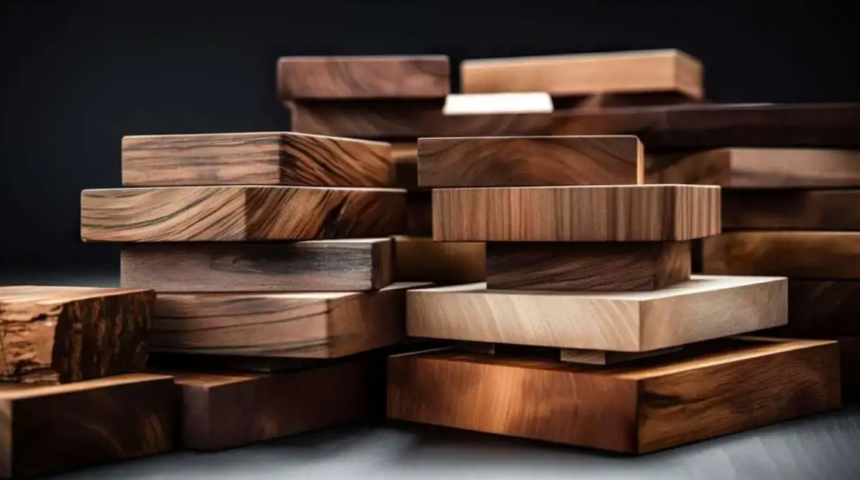What is Plangud?
Plangud, commonly known as wooden planks, are flat, rectangular pieces of wood extensively used in construction, carpentry, and interior design. These versatile materials come in various types, sizes, and finishes, making them essential for various applications. Plangud can be crafted from different types of wood, including oak, ash, pine, and more, each bringing unique properties that influence their durability, appearance, and suitability for specific uses.
Types of Plangud
Dried Oak and Ash Planks
Dimensions: Dried oak and ash planks typically range in thickness from 50 to 60 mm, with widths between 200 and 400 mm. Their lengths can extend to 3000 mm, although custom sizes up to 800 mm in width can be ordered to meet specific requirements.
Quality Grades: These planks are commonly available in AB and ABC grades. The AB grade indicates higher quality with fewer knots and imperfections, while the ABC grade may include more natural features, adding character to the planks.
Applications: Dried oak and ash planks are ideal for high-quality furniture, flooring, and decorative elements. Their durability and rich appearance make them preferred for projects requiring strength and aesthetic appeal.
Hand-Hewn Planks
Craftsmanship: Hand-hewn planks are crafted using traditional techniques that preserve their natural, rustic appearance. The manual processing ensures each piece retains its unique texture and charm.
Dimensions: These planks generally range in length from 1000 to 5000 mm and start from 100 mm in width, allowing for flexibility in design and application.
Applications: Hand-hewn planks are perfect for creating unique interior design elements like feature walls, rustic furniture, and decorative panels. Their natural, rugged texture adds authenticity and character to any space.
Benefits of Using Plangud
- Durability: Plangud are known for their strength and longevity, making them suitable for structural and decorative applications.
- Aesthetic Appeal: The natural beauty of wood adds warmth and elegance to any project.
- Versatility: Available in various types, sizes, and finishes, plaque can be customized to meet specific needs.
- Sustainability: Wood is a renewable resource, making planned an eco-friendly choice for construction and design.
- Ease of Use: Plangud is easy to work with, allowing for a wide range of creative applications.
Applications of Plangud
Construction
Plans are used in construction for framing, flooring, and roofing. Their strength and durability make them ideal for structural applications, ensuring the stability and longevity of buildings.
Carpentry
Carpenters use plangud to create furniture, cabinetry, and other wooden fixtures. The ability to choose from different types of wood allows for customization based on the desired look and functionality.
Interior Design
Plangud is popular in interior design for creating feature walls, decorative panels, and custom furniture. Their natural texture and appearance add a touch of elegance and warmth to any space.
FAQs About Plangud
What types of wood are commonly used for planned?
Common types of wood used for plague include oak, ash, pine, and maple. Each type offers unique properties that influence the durability, appearance, and suitability for specific applications.
How are plangud graded?
Plangud are typically graded based on quality, with common grades being AB and ABC. AB grade planks have fewer knots and imperfections, while ABC grade planks may include more natural features, adding character to the wood.
Can plangud be customized?
Yes, plangud can be customized in size, finish, and type of wood. This flexibility allows for tailored solutions to meet specific project requirements.
What are the benefits of using hand-hewn planks?
Due to their traditional crafting techniques, hand-hewn planks offer a unique, rustic appearance. Each piece retains its natural texture and charm, making them ideal for designs that embrace a vintage or countryside aesthetic.
Are planned environmentally friendly?
Yes, plangud are considered environmentally friendly as wood is a renewable resource. Sustainable forestry practices ensure that the use of wood does not deplete natural resources.
Conclusion:
Plangud are a fundamental material in construction and woodworking, offering numerous benefits such as durability, aesthetic appeal, versatility, and sustainability. Understanding the different types and applications of planning will help you make informed decisions for your projects. Whether you’re building a house, crafting furniture, or designing an interior space, plangud provides a reliable and beautiful solution.






